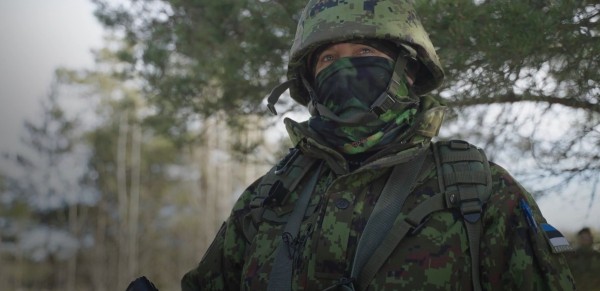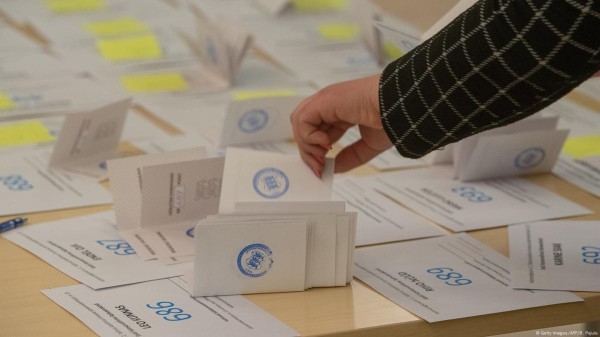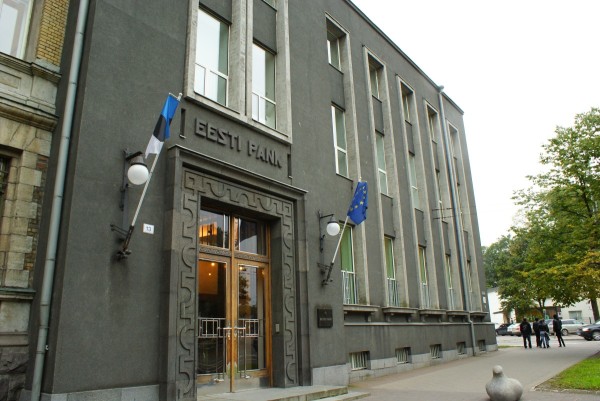
Within minutes, the battle was over. Although the outnumbered fighters did not manage to vanquish the opposing force, Kaia, an accountant who had left her baby at home that weekend, was pleased with the training exercise. “They did pretty well,” she said of the volunteers in the Estonian Defense League (EDL) she was helping instruct. “They stayed calm, and they held their ground.”
A member of the Estonian Defense League in the forests of Klooga, Estonia on March 27.
Birgit Püve for TIME
The Baltic states of Estonia, Latvia, and Lithuania have been preparing to do the same. A shared border with Russia, and a painful history of Soviet occupation that began in the 1940s and saw the deportation and imprisonment of hundreds of thousands of citizens, spurred all three nations to join NATO once they regained independence in the 1990s. It has also led them to adopt a broad, society-wide approach to defense that has proved especially relevant more recently, as Russia has ramped up disinformation efforts in the region. Nowhere is that more evident than in Estonia, where 15,000 ordinary citizens like Kaia spend several weekends each year training in guerrilla warfare as part of the EDL. And since Russia invaded Ukraine in February, heightened fears that the Baltics could be the Kremlin’s next target have spurred thousands more to sign up.
Advertisement / Reklaam
Advertisement / Reklaam
https://time.com/6164840/eston...


